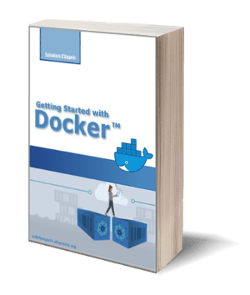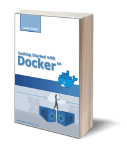
Demystifying Agile: Unleashing the Power of Flexibility in Project Management
Posted on 03 Jun 2023
Introduction
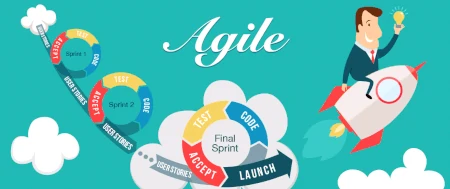
Agile methodology is a project management approach that emphasizes flexibility, collaboration, and adaptability. Unlike traditional models, Agile takes an iterative and incremental approach, breaking projects into shorter development cycles. Cross-functional teams work collaboratively, embracing change and prioritizing customer feedback throughout the process. Agile fosters teamwork, transparency, and frequent communication, enabling organizations to deliver high-quality products or services that meet evolving customer needs. Agile principles are not limited to software development but can be applied to various industries.
Waterfall vs Agile
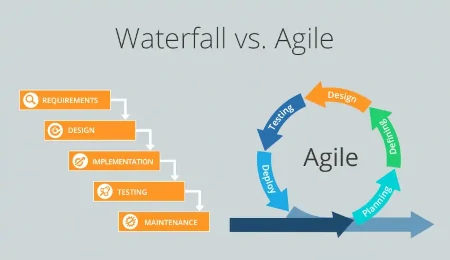
Photo from https://www.nimblework.com/
In this section, we will compare the traditional Waterfall model with Agile methodology. The Waterfall model is a sequential and linear approach to project management, while Agile offers a more flexible and adaptive approach.
The Waterfall model follows well-defined phases such as analysis, design, development, testing, and implementation, which are executed in a predetermined order. However, this approach comes with several challenges.
-
Rigid Planning: The Waterfall model requires detailed planning at the beginning of the project, which can be problematic when requirements change or new information emerges during development.
-
Limited Adaptability: Once a phase is completed, it is difficult to go back without revisiting the entire process, slowing down response to changes and innovation.
-
Lack of Customer Involvement: Customer involvement mainly occurs at the end of the project when the results are already produced. This can lead to delayed feedback or misinterpretation of customer needs.
Agile methodology, on the other hand, offers a more flexible and adaptive approach to project management. It addresses the limitations of the Waterfall model by incorporating the following key elements:
-
Iterative and Incremental Development: Agile breaks projects into short iterations allowing for regular feedback, continuous improvement, and the ability to adapt to changing requirements.
-
Collaboration and Customer Engagement: Agile promotes frequent collaboration among team members and involves customers throughout the development process. This ensures that the product meets their needs and reduces the risk of misalignment.
-
Embracing Change: Agile embraces the reality of changing requirements and priorities. It allows for flexibility, enabling teams to respond quickly to new information or customer feedback.
-
Continuous Delivery: Agile focuses on delivering incremental value throughout the project, allowing for faster time-to-market and early feedback from stakeholders.
Overall, Agile methodology provides a more responsive and customer-centric approach, enabling teams to deliver high-quality products while adapting to evolving needs and market dynamics. It fosters collaboration, adaptability, and continuous improvement, leading to better project outcomes.
Journey to the Agile Manifesto

Photo from https://www.istockphoto.com/
In February 2001, seventeen software practitioners gathered at a ski resort in Utah. Despite having different opinions on software development approaches, they agreed on one thing: the status quo was not acceptable. There was a need for a different approach to documentation-driven processes and heavy development methodologies.
The group formed what came to be known as the Agile Alliance. From their meeting emerged the Agile Manifesto, which consisted of four core values and twelve principles.
The Agile Manifesto provided a new direction for software development, promoting agility, adaptability, and customer-centricity. It has since become a guiding framework for Agile methodologies such as Scrum, Kanban, DevOps, and Extreme Programming (XP), revolutionizing the way projects are managed and executed in the software industry.
Unveiling the Agile Onion: Exploring the Five Layers of Agile Transformation
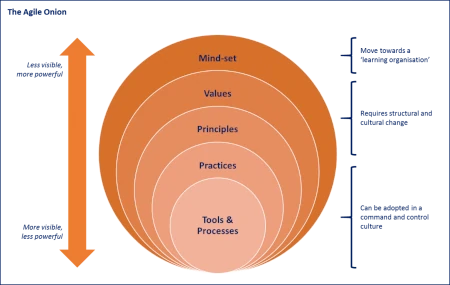
Photo from https://www.linkedin.com
Before delving into the intricacies of Agile methodology, it is crucial to understand the foundational concept of the “Agile Onion.” The Agile Onion represents a holistic framework for Agile transformation, consisting of five interconnected layers. These layers encompass the fundamental aspects of Agile methodology, including mindset, values, principles, practices, and tools and processes. In this section, we will peel back each layer of the Agile Onion to delve into its significance and its role in fostering Agile practices.
-
Mindset: At the core of the Agile Onion lies the mindset, which serves as the driving force behind the Agile philosophy.
-
Values: The second layer of the Agile Onion comprises the core values that guide Agile practitioners.
-
Principles: Building upon the Agile values, the principles layer provides a set of guidelines to achieve Agile success. The Agile principles, derived from the Agile Manifesto, offer practical insights and approaches for effective project management.
-
Practices: The practices layer of the Agile Onion encompasses a wide array of techniques and methodologies used in Agile project execution. Practices such as Scrum, Kanban, DevOps, and Extreme Programming (XP) enable Agile teams to plan, execute, and deliver value incrementally.
-
Tools and Processes: The outermost layer of the Agile Onion encompasses the tools and processes that support Agile implementation. These include project management tools, collaboration platforms, version control systems, and continuous integration and delivery pipelines. Agile teams leverage these tools and processes to enhance communication, streamline workflow, and automate repetitive tasks. While these tools are valuable, it is important to remember that they are enablers and should align with Agile mindset, values, principles, and practices.
Nurturing the Agile Mindset: Cultivating a Foundation for Success
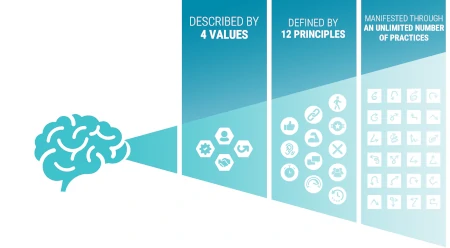
Photo from https://www.icagile.com
The Agile mindset embraces change fearlessly, promotes transparency, cultivates a learning culture, encourages collaboration, and values self-organization. It is described by four core values and defined by twelve principles. This mindset can be applied through a wide range of practices such as Scrum, Lean, DevOps, Extreme Programming, and more. By adopting the Agile mindset, teams can adapt swiftly, communicate openly, continuously learn, collaborate effectively, and deliver valuable results. It forms the foundation for successful Agile transformations, enabling organizations to thrive in an ever-changing business landscape.
Revealing the 4 Core Values: Guiding Cornerstones for Agile Triumph
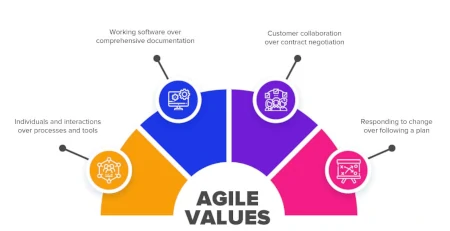
Photo from https://www.questionpro.com
The Agile Manifesto is built upon four core values that provide the foundation for Agile methodologies. These values emphasize the importance of people, collaboration, customer satisfaction, and adaptability in software development. They represent a shift in focus from rigid processes and documentation to a more flexible and customer-centric approach. These are the 4 values upon which the Agile Manifesto is based:
-
Individuals and Interactions over Processes and Tools This value emphasizes the importance of people and effective collaboration within the team, recognizing that relationships and interactions are crucial to project success.
-
Working Software over Comprehensive Documentation This value highlights the significance of delivering functional software that meets customer needs, rather than focusing extensively on exhaustive documentation.
-
Customer Collaboration over Contract Negotiation This value promotes active engagement and collaboration with customers throughout the development process, emphasizing the value of understanding and meeting their evolving requirements.
-
Responding to Change over Following a Plan This value acknowledges the inevitability of change and prioritizes the ability to adapt and respond quickly to changes in requirements, technology, or market dynamics.
Unearthing the 12 Principles: Guiding Foundations for Agile Mastery
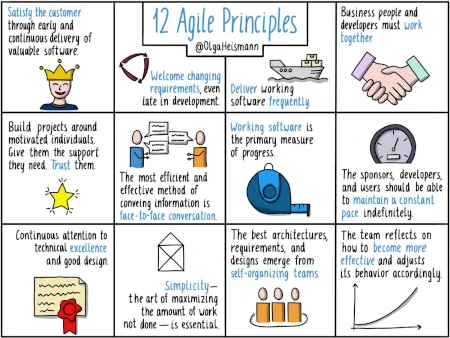
Photo from https://twitter.com
In addition to the core values, the Agile Manifesto consists of twelve principles that further guide the application of Agile methodologies. These principles highlight the significance of early and continuous delivery of value, the embrace of changing requirements, close collaboration with customers, and the empowerment of motivated individuals. They emphasize the importance of working software, technical excellence, simplicity, and continuous improvement. These are the 12 principles upon which the Agile Manifesto is based:
- Satisfy the customer through early and continuous delivery of valuable software.
- Welcome changing requirements, even late in the development process. Agile processes harness change for the customer’s competitive advantage.
- Deliver working software frequently, with a preference for shorter timescales.
- Collaborate closely with customers and stakeholders throughout the project.
- Build projects around motivated individuals. Give them the environment and support they need and trust them to get the job done.
- The most efficient and effective method of conveying information within a development team is face-to-face conversation.
- Working software is the primary measure of progress.
- Agile processes promote sustainable development. The sponsors, developers, and users should be able to maintain a constant pace indefinitely.
- Continuous attention to technical excellence and good design enhances agility.
- Simplicity, as the art of maximizing the amount of work not done, is essential.
- The best architectures, requirements, and designs emerge from self-organizing teams.
- Regularly reflect on how to become more effective and adjust behavior accordingly.
In conclusion, the four core values and twelve principles of the Agile Manifesto provide a solid foundation for organizations and teams embracing Agile methodologies. By prioritizing individuals, collaboration, customer satisfaction, and adaptability, Agile practices enable teams to deliver valuable software in a more responsive and efficient manner. These values and principles foster a culture of continuous improvement, innovation, and customer-centricity, driving project success in today’s dynamic and ever-changing business landscape. By adhering to these guiding principles, organizations can unleash the true potential of Agile and achieve better outcomes for their projects and customers.
Unlocking Success: Key Benefits of Agile Methodology
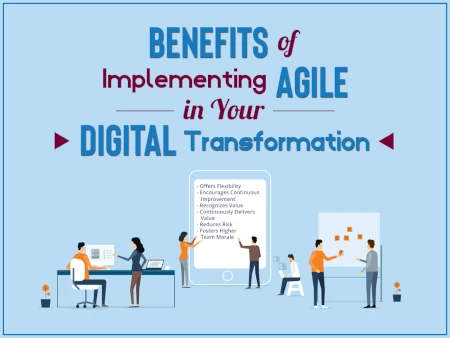
Photo from https://www.planbox.com
Adopting Agile methodology brings numerous advantages that empower organizations to thrive in today’s fast-paced and dynamic business landscape. Let’s explore some of the key benefits that Agile offers:
-
Improved Product Quality: By emphasizing continuous testing, collaboration, and frequent feedback, Agile ensures a relentless focus on delivering high-quality products. Regular inspections and adaptations lead to early identification and resolution of issues, resulting in a superior end product.
-
Increased Customer Engagement: Agile methodologies prioritize customer involvement throughout the development process. By engaging customers regularly and seeking their feedback, Agile ensures that the final product meets their evolving expectations. This customer-centric approach fosters stronger relationships and enhances customer satisfaction.
-
Risk Mitigation: Agile’s iterative approach enables early identification and mitigation of risks. By breaking projects into smaller increments, teams can evaluate potential risks and challenges more frequently, allowing for proactive measures and timely adjustments.
-
Improved Team Satisfaction: The Agile methodology values the input and autonomy of team members, providing opportunities for skill development, personal growth, and decision-making. This leads to higher levels of job satisfaction and employee engagement, fostering a positive and motivated team environment.
-
Enhanced Adaptability: Agile enables organizations to quickly respond and adapt to changing market conditions, customer needs, and emerging opportunities. The iterative and flexible nature of Agile allows teams to embrace change and adjust their course of action efficiently.
-
Enhanced Team Productivity: Agile practices promote collaboration, transparency, and self-organization within teams. By encouraging cross-functional collaboration and empowering team members, Agile creates an environment that nurtures creativity, innovation, and productivity.
-
Faster Time-to-Market: Agile’s iterative and incremental approach enables faster delivery of working software, allowing organizations to gain a competitive edge. By delivering value in shorter cycles, businesses can seize market opportunities more quickly and respond to customer demands promptly.
Embracing Agile methodology brings a multitude of benefits to organizations. By harnessing these advantages, organizations can achieve better project outcomes, drive innovation, and establish a competitive advantage in today’s rapidly evolving business landscape.
Exploring Agile Practices
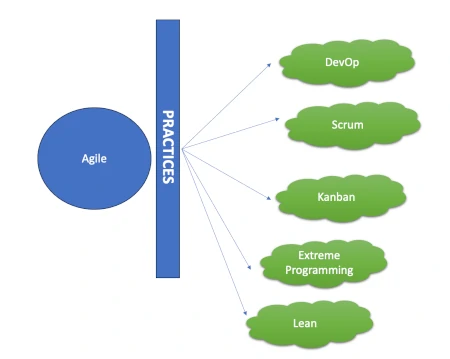
In the realm of Agile, several methodologies have emerged as effective practices for achieving project success. These methodologies, situated at the level of practices within the Agile Onion, are tailored to specific project requirements and team dynamics. Let’s delve into some of the most commonly used Agile methodologies:
-
Scrum: Scrum stands as one of the most popular and widely adopted Agile methodologies. It emphasizes iterative development and collaboration within self-organizing cross-functional teams. Utilizing short iterations called sprints, Scrum enables the delivery of incremental value. With daily stand-up meetings, sprint planning, sprint review, and retrospective sessions, Scrum facilitates transparency, communication, and continuous improvement.
-
Kanban: Kanban focuses on visualizing and optimizing workflow. Through the use of a visual board with columns representing different stages of work, such as “To Do,” “In Progress,” and “Done,” teams can streamline their processes. By limiting work in progress (WIP) to enhance flow and efficiency, Kanban emphasizes a steady and balanced workflow, allowing teams to prioritize and pull work based on capacity.
-
Lean: Lean principles, originating from the Toyota Production System, have integrated into Agile methodologies. Lean Agile concentrates on eliminating waste, optimizing value delivery, and empowering teams to continuously improve processes. By maximizing customer value, minimizing defects, and fostering a culture of continuous learning and improvement, Lean Agile promotes efficient and effective project outcomes.
-
Extreme Programming (XP): Extreme Programming promotes high-quality software development through practices such as test-driven development (TDD), continuous integration, pair programming, and frequent releases. With a strong emphasis on customer involvement, feedback, and rapid adaptation to changing requirements, XP encourages close collaboration between developers, testers, and customers throughout the development lifecycle.
-
DevOps: In addition to the aforementioned methodologies, DevOps plays a vital role in Agile practices. DevOps focuses on bridging the gap between development and operations teams, promoting collaboration, automation, and continuous delivery. By integrating development and operations processes, DevOps enables rapid and reliable software releases, fostering agility, efficiency, and improved product quality.
These Agile methodologies—Scrum, Kanban, Lean, Extreme Programming, and DevOps—offer diverse approaches to implementing Agile principles and practices. Selecting the most suitable methodology depends on project requirements, team dynamics, and organizational context. By leveraging the strengths of these methodologies, organizations can effectively embrace Agile principles and drive successful project outcomes.
Enhancing Agility: Tools and Processes for Effective Agile Implementation
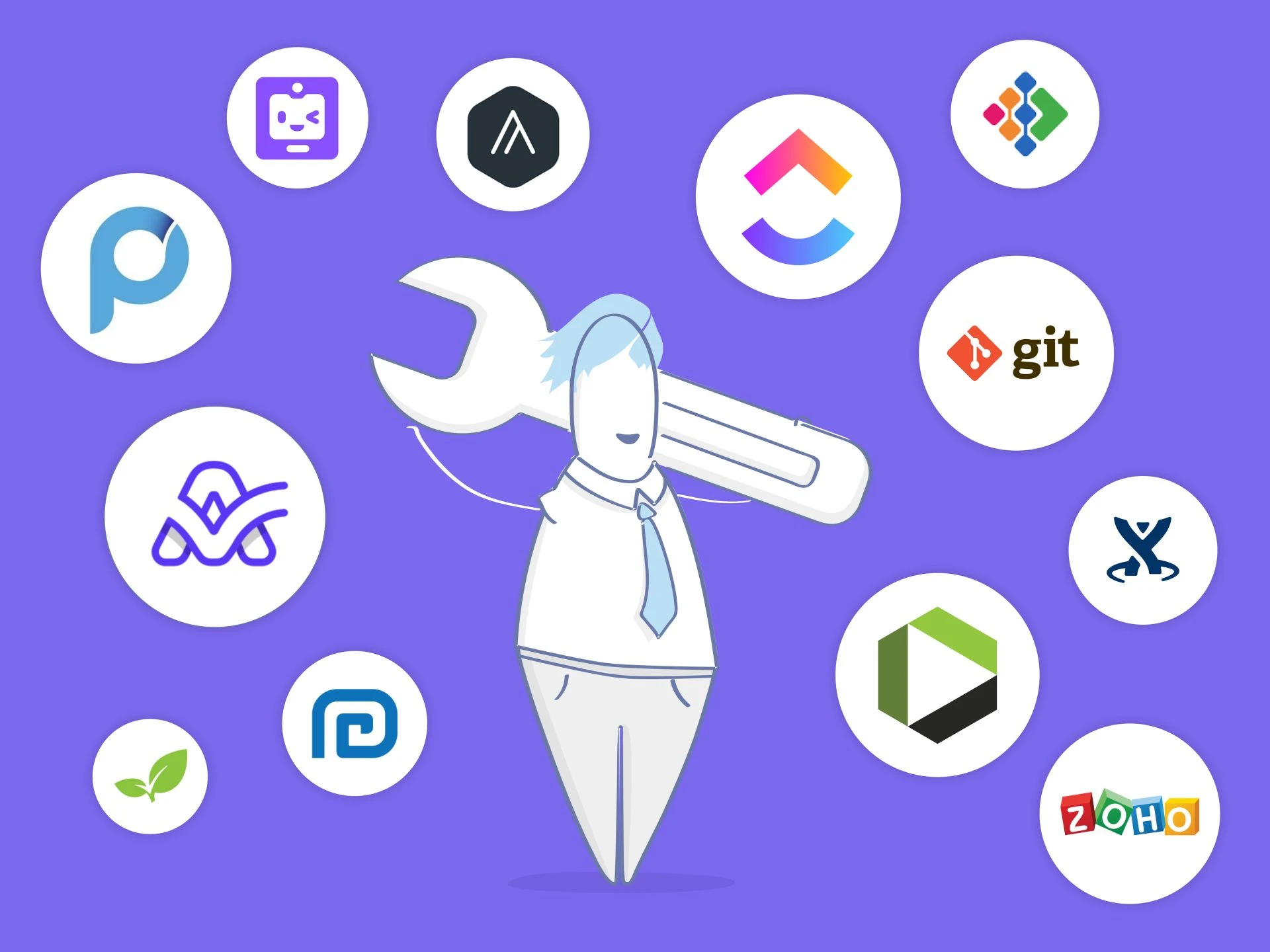
Photo from https://fuel.york.ie/
Agile methodologies are supported by a variety of tools and processes that enable teams to effectively implement and manage their agile practices. The specific tools and processes utilized can vary depending on the chosen agile framework or practice. For example, Scrum, one of the popular agile frameworks, incorporates specific processes to create value through successive iterations, known as Sprints.
In Scrum, teams utilize a set of tools and processes that are highly visible and integral to the overall agile process. These include: Daily Scrum, Sprint Planning, Retrospective, Backlog, etc.
It’s important to note that while Scrum has its specific set of tools and processes, other agile practices such as Kanban, Extreme Programming (XP), and Lean, among others, have their own unique tools and processes tailored to their respective methodologies. The selection of tools and processes depends on the specific needs and context of the project and the preferences of the agile team.
Conclusion:
In conclusion, Agile methodology offers a flexible, collaborative, and customer-centric approach to project management. By embracing Agile principles, organizations can reap numerous benefits, including enhanced adaptability, improved product quality, increased customer engagement, risk mitigation, improved team productivity and satisfaction, and faster time-to-market. The Agile Manifesto, with its four core values and twelve principles, provides a solid foundation for Agile practices and guides teams in delivering high-quality software while responding to change. Additionally, Agile methodologies such as Scrum, Kanban, Lean, Extreme Programming (XP), and DevOps offer effective practices tailored to specific project requirements and team dynamics. By adopting Agile methodologies and fostering an Agile mindset, organizations can achieve project success, drive innovation, and gain a competitive edge in today’s rapidly evolving business landscape.

